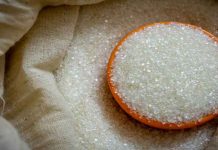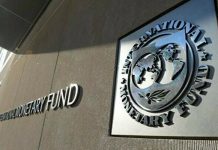ISLAMABAD: Value extraction from rice husk (RH) can benefit Pakistan far more than its direct export. Pakistan is the 10th largest rice producer and contributes 8% of the total rice production worldwide.
A considerable quantity of RH is produced in the country annually. In 2021, the total export volume of rice husk was about 618.81 million metric tons worth US$48.21 million. Pakistan is the 3rd largest exporter of husk and it can increase the export by further processing the agricultural residue.
Talking to WealthPK, senior scientist (Technology Lab) from the Rice Research Institute, Kala Shah Kaku Mohsin Ali Raza said, “Pakistan produced about 8.5 million tonnes of paddy (rice with outer husk) during the year 2021-22 from which about 1.7 million tons of husk was separated. It must be considered as a superbly valuable waste to get high economic benefits. Unfortunately, not any work to extract the worth of all by-products is in practice in the country. A lot of useful elements can be extracted from the rice husk i.e., silica, activated carbon, etc.’’
Asked why such projects were not in process in Pakistan, Mohsin said the focus and budget reserved for research and development (R & D) in Pakistan were equal to nothing. Mostly, it is considered a waste of time and money. “In our neighbouring country India, they have established small engineering boards or consultancy panels at both private and official levels who research and prepare the feasibility reports to guide the new investors,” he said.
“Unfortunately, Pakistan lags behind in this sector. It is not only in the case of rice husk, but a lot of other agri waste is also wasted. It is not so that there is a lack of intelligence. This flaw is actually due to the official negligence concerning the policy framework. It is important and good to bring awareness to get the attention of the authorities concerned,” the Rice Research Institute official said.
About 18-20% of ash is produced from the total weight of rice husk and the worldwide average production of Rice Husk Ash (RHA) is approximately 20 million tonnes per annum. It is expected to reach 55,00 million tonnes approximately by the year 2031. It is estimated that the global RHA market will expand at a compound annual growth rate (CAGR) of 5% to US$ 2.2 billion by the year 2031.
The aggregate of silica from RHA is from 80% to above 95%. Rice husk constitutes about 20% of the weight of rice and every 100kg burnt in the boiler yields about 25kg ash. Other constituents of rice husk which can be used industrially at a vast level are lignin (25% to 30%), cellulose (50%), etc.
Regarding the economic value of some extracts from rice husk, industrially, RHA is used as a filter, additive, oil absorbent, abrasive agent, suspension agent for porcelain enamels, partial replacement of cement, sweeping component, pozzolan in the construction segment, concrete making, anti-corrosion agent for steel reinforcement, refractories, production of high-quality flat steel, insulation purposes, organic fertilizer, husk board, to produce silica and value-added activated carbon.
The global silica market is anticipated to grow at a CAGR of 8.7% to US$ 12.2 billion by the year 2029. It is used to produce abrasives, polishes, glass, bricks, specialty coatings, optics, rubber, ferro silicones, refractories, fillers, charcoal, extenders, etc. It is considered the most promising and environment-friendly source to produce silicon-based materials.
The global lignin market is expected to get a worth of about US$ 1.6 billion by the year 2030. Industrially, lignin is used as a binder in wood products, soil conditioners, filler, linoleum adhesive, etc. Lignin is also used to produce vanillin and dimethyl sulfoxide.
Hydrogels with the highest water absorption capacity are produced from rice husk cellulose fibres keeping a high purity degree. By the year 2020 cellulose fiber paper was the world’s 190th most traded product with a total trade volume of US$18.6 billion.
Another derivative from the rice husk is activated carbon or charcoal. Its market size at the global level is expected to grow at a CAGR of 2.9% to US$3.44 billion by the year 2030. It is an active element for both domestic and industrial uses e.g., to purify the drinking water, ground and municipal water treatment, landfill and power plant gas emissions, odour controller, precious metal recovery, etc.
Pakistan is an agri-based country where a great number of people are attached with this sector to earn a sustainable livelihood. The farmers must be made aware of the economic value of the agri waste and trained officially to extract every valuable from it.






